The FIA’s announcement yesterday of a restructuring of its Formula 1 operation is intended to draw a line under a process which began in response to the controversial conclusion to the 2021 world championship.
It will inevitably focus attention on whether the sport’s governing body can reduce the confusion, inconsistencies and errors which created too many problems during races last year.The FIA embarked on an “analysis and clarification exercise” three days after the 2021 season ended in bitter recriminations at Yas Marina. The outcome appeared three months later as a 3,300-word report which laid out the reasoning for a raft of changes to how the sport’s governing body runs the races which constitute its most prestigious championship.
Race director Michael Masi was removed from his position for failing to enforce the series’ rules correctly in the final lap restart which decided the destiny of the 2021 drivers’ title. But the report also recommended reducing the responsibilities involved in the position Masi held.
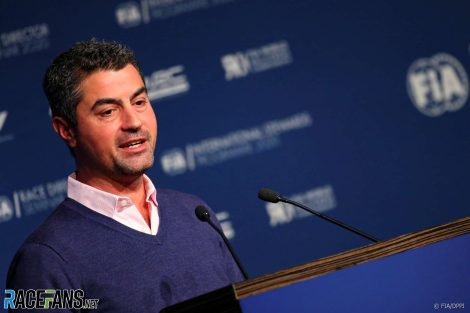
“Suggestions made by the F1 Commission, and those interviewed included that some of the race director’s responsibilities should be divided and assigned to other persons to reduce the workload of the race director and allow them to focus on their key functions, including managing and controlling the race,” it added.
This led to several changes which were introduced in time for last season, such as the expansion of the race management team and the creation of a Remote Operations Centre to provide extra support to it. However other key recommendations from the report could not be completed before the end of the 2022 championship.
Advert | Become a RaceFans supporter and
Yesterday the FIA declared “the reorganisation of the Formula 1 departments is now complete and will be in place ahead of the 2023 season”. A key development is that the role of FIA F1 sporting director, which was announced last March, has been filled. Significantly, the position has been taken by Steve Nielsen, who has four decades of experience in the series and was most recently the sporting director for Formula 1 itself.
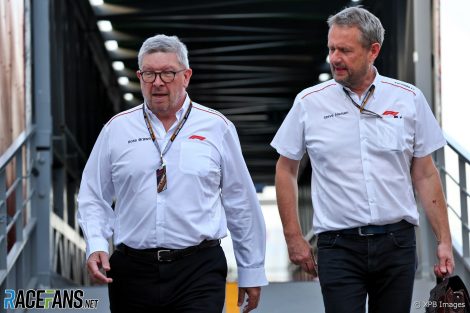
It’s not hard to imagine why. The FIA may have had no choice other than to replace Masi, but doing so was never going to be a cure-all for the underlying problems identified in its own report. Although referees’ decisions are always going to provoke debate, and while there were some improvements in race administration last year, there were also still too many problems.
The new race direction team installed in 2022 won praise from drivers for some of its policies, notably clarifying the grey area of track limits by introducing a hard-and-fast rule: The line is the boundary, no exceptions. This may not have ended arguments over track limits – some errors were spotted too late to be acted upon in time, as in Austria – but it was a clearer system than the messy arrangement which went before. Clearer guidelines regarding racing incidents were also issued and largely followed.
On other occasions the FIA was quick to react to errors by implementing new procedures. Drivers were angered by the decision to send a recovery vehicle onto the track during a Safety Car period in heavy rain at Suzuka, but a swift and detailed report was produced and a new warning system introduced immediately.
Moreover, not all apparent cases of errors by race control during 2022 were necessarily that. Race management were criticised both for delaying the start in Monaco in anticipation of heavy rain and not delaying the start in Japan despite heavy rain. At Monza they were pilloried for ending the race using a Safety Car, but the slower than expected recovery of a crashed car left them no alternative under the rules which on that occasion were followed, unlike in Abu Dhabi the year before.
Advert | Become a RaceFans supporter and
But, with the best will in the world, there were also too many times when races were mis-handled by those in charge, leading to unnecessary confusion, drivers being disadvantaged and – in the worst case – potentially exposed to added risk.
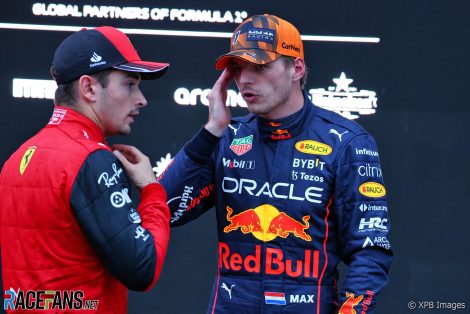
The FIA was undoubtedly correct to change a rule which in 2021 saw half-points awarded at the Belgian Grand Prix which officially consisted of no more than a single lap run behind the Safety Car. Unfortunately the new rules introduced as a result did not function as intended.
When Verstappen won a Suzuka race curtailed to 52% of distance, teams and the watching world expected full points would not be awarded, and he would therefore have to wait until the next round to become champion. When this turned out not to be the case, Verstappen took some persuading he had in fact won the title. Crucially, revising F1’s Sporting Regulations will now be the responsibility of sporting director Nielsen rather than the race director.
This wasn’t the only occasion in 2022 when a minor rules change had major implications. The regulations regarding the pit lane exit were tweaked during the off-season, and as a result straying partially across the line no longer triggered a penalty as it once did. Ferrari were unimpressed to discover this only after protesting Sergio Perez when he beat their driver Carlos Sainz Jnr to victory in Monaco.
While the FIA was quick to address the errors which led to a horrified Pierre Gasly passing a recovery vehicle during a Safety Car period at Suzuka, the reason it happened in the first place was that race control had failed to notice the AlphaTauri driver had pitted and would therefore encounter the crane at speed.
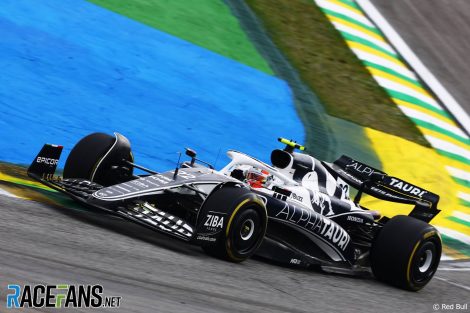
Haas were infuriated by the lack of consistency around the use of the black-and-orange flag, which Kevin Magnussen saw three times for loose front wing end plates, but was not shown to Fernando Alonso for lap after lap at the Circuit of the Americas while a wing mirror worked loose and fell off. A Haas protest against Alonso was accepted but later rejected when it transpired team principal Guenther Steiner had been given incorrect information about the deadline to submit their paperwork by FIA race director Niels Wittich.
Advert | Become a RaceFans supporter and
These were the headline-grabbing cases, but there was more besides which race control need to address in 2023: The wide variation in the time taken to rule on different racing incidents, disagreement over whether teams should be able to plead cases before the stewards and uncertainty around whether drivers should expect to be advised by race control when they need to relinquish a position to a rival.
With the FIA’s new regime in place, the 2023 F1 season will be the first test of whether it correctly identified the root problems which led to one of its most controversial championship finales ever, and still dogged the series last season. The FIA will expect to see improvements this year, and just as importantly, so will F1.
Become a RaceFans Supporter
RaceFans is run thanks in part to the generous support of its readers. By contributing £1 per month or £12 per year (or the same in whichever currency you use) you can help cover the costs of creating, hosting and developing RaceFans today and in the future.
Become a RaceFans Supporter today and browse the site ad-free. Sign up or find out more via the links below:
2023 F1 season
- FIA president cleared of alleged interference in two 2023 races
- First week viewing figures for new Drive to Survive season fall again
- Max who? Drive to Survive season six prefers its favourite faces
- RaceFans’ complete 2023 season review
- The F1 drivers who pulled off the 10 biggest charges through the field in 2023




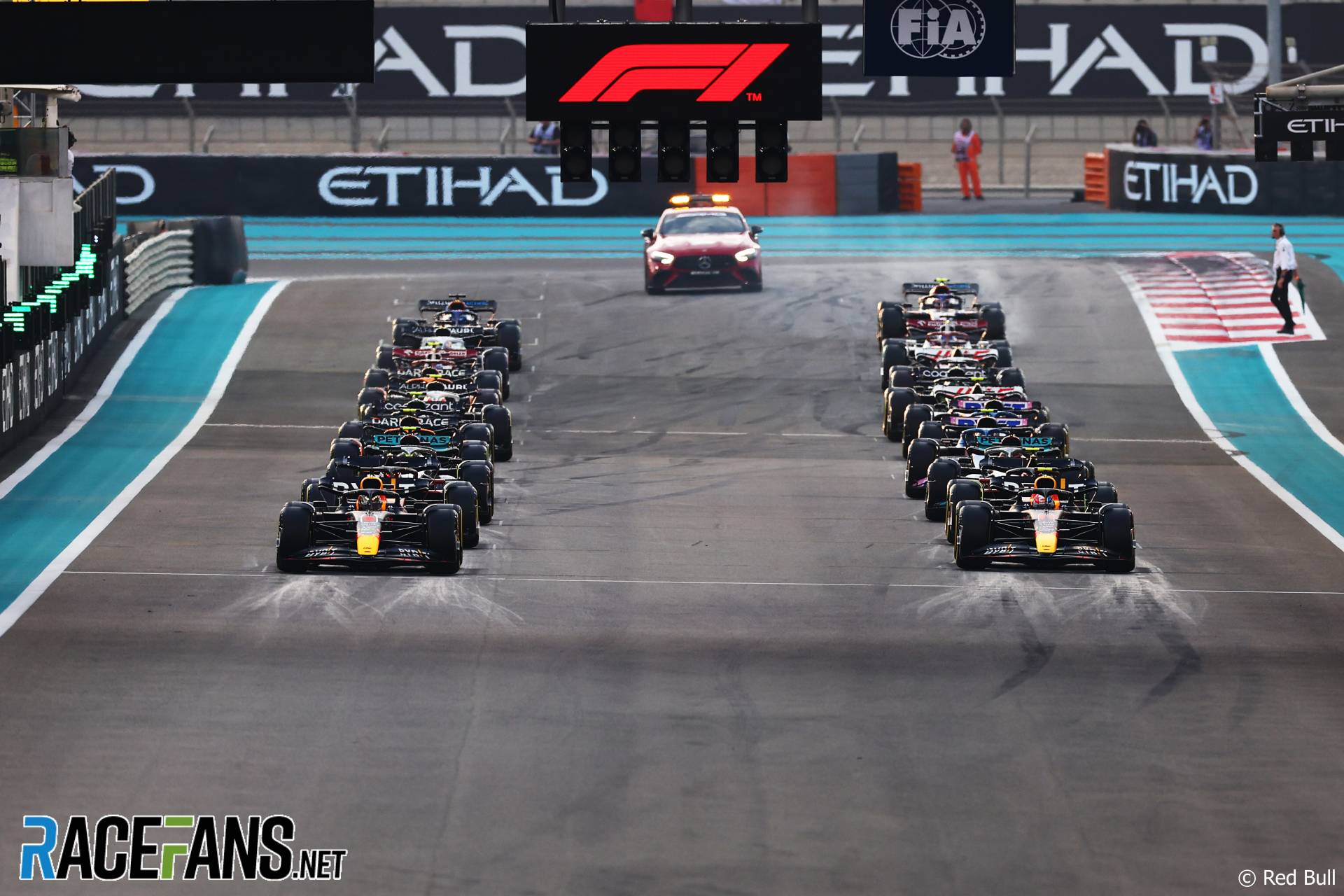
Red Andy (@red-andy)
19th January 2023, 7:59
I think Race Control deserve criticism for all of these instances, actually.
In Monaco there was no need to delay the start, and indeed the delay probably caused more problems than it solved given that the rain caused the starting gantry to malfunction. If we’d already been racing by the time the race started, this wouldn’t have mattered.
In Japan, again, there was no need for a red flag – there were full wet tyres available which teams could have used if they were concerned about the conditions.
At Monza, although Ricciardo’s car took longer than anticipated to clear, the Safety Car should have been deployed sooner. It would then have picked up the leaders at the pit exit, rather than picking up the wrong car and having to wait until the track was clear to release most of the field. This would have shortened the overall SC period and might have led to the race finishing under green flag conditions.
Craig
19th January 2023, 9:22
Regarding the safety car, the procedure should be updated to declare a the safety car will be deployed so the pack slows down and the car itself isn’t deployed until the race leader reaches a certain section of the track to reduce the number of potential back markers picked up.
So it’d go;
Accident happens, VSC conditions take effect, leader reaches last mini-sector of lap or start/finish line, safety car is deployed onto track to pick up leader and full SC conditions take effect.
Alianora La Canta (@alianora-la-canta)
27th January 2023, 20:56
@red-andy Full wet tyres don’t help with visibility, which was the bigger problem in Suzuka than standing water, because they displace more water than the intermediates (which apparently weren’t providing enough visibility either). The laps to the grid made the visibility issue pretty clear, which warranted criticism. There were also… …other issues that we may hear more about in the future.
There’s also the point that there was plenty of time after Ricciardo’s car was cleared to remove the Safety Car as required by the regulations.
S
19th January 2023, 8:41
The biggest error the FIA have made that they must never repeat is the handing over of any significant level of control of their premier series to the competitors and other self-serving stakeholders.
Alianora La Canta (@alianora-la-canta)
27th January 2023, 20:57
Which means it needs to avoid repeating the errors in this article (to avoid having it taken from its hands by a court and potentially handed over to competitors or other stakeholders it – and you – don’t like).
slowmo (@slowmo)
19th January 2023, 9:12
Last year was always going to have issues given the huge amount of change and little time they had to do it before the season began. I would query why the stance on asking the race director if drivers needed to give places back was brought back as it seemed to be at the end of the year, as that was one of the things I thought they’d changed and were not allowing anymore.
Ultimately I’m hoping for less errors this year, a continued push for consistency and ideally ensure the rules are enforced as written. It would also be nice if teams weren’t allowed to get away with running illegal cars for half a season because it’s inconvenient for them to make changes quickly to a design they decided to pursue knowing full well it was in a grey area.
Alianora La Canta (@alianora-la-canta)
27th January 2023, 20:58
@slowmo One race director made the rule, the other didn’t like it, and it was the other director who stayed on. This explains quite a few other problems that crept in towards the end of the year (such as the white line rule not always being kept).
The Edge (@the-edge)
19th January 2023, 10:15
1/ stop dishing out penalties for incidents which are clearly racing
2/ stop handing out penalty points like Smarties at the children’s party
3/ learn their own rules and stop making them up as they go along
4/ treat all the incident of the same, regardless of whether your name is Max Verstappen
S
19th January 2023, 10:26
1- Clearly to who? And at which point does it become penalty-worthy?
2- Penalty points are awarded only to rule-breakers.
3- They know their rules, but are often prevented from applying them due to commercial pressures.
4- No two (or more) incidents are ever the same, regardless of who is involved.
The biggest problem associated with applying rules in F1 is the resistance from the teams. Two of them in particular.
Jere (@jerejj)
19th January 2023, 16:22
@S While no two or more incidents are ever exactly identical, the point is that all predominantly similar incidents should get equal treatment as treating situations that are, in principle, the same differently creates a double standard, which is never okay.
Zann (@zann)
19th January 2023, 14:33
Masi was 100% correct with his initial call. Then suddenly he changed it and isn’t allowed to explain. Likewise Spa’s half points 2nd lap was obviously for one particular reason and not any kind of ‘mistake’. The whole idea of a safety car is unnecessary now, when it’s so easy to control the speed of the cars down to 1kph at any point on the track.
What they need is to change the fakery and deceit, not any particular director.
Stew
20th January 2023, 14:14
I agree wholeheartedly, Massi was “Nobbled”, but the biggest issue about the SC is that it’s unnecessary, as you said, they can control the cars with the same lights as they have now, with their speed and actions dictated by the same rules already in place (even if it means the rest of the pack can catch up or not).
The drivers themselves are well aware of what constitutes a danger, and I doubt whether they would be breaking the VSC rules either consciously or deliberately – which is very easily managed and monitored by the number of people looking at screens in the FIA room. Breach the safety or fair competition rules and you get hit with a penalty – how many teams are going to allow their drivers to cheat when the option of “waiting till the race ends to find out what happens” is taken away immediately. Race Director says: drop back five places – no argument or it’s Ten Places, would soon get the idea across that it’s not worth it to buck the rules about VSC.
Fair competition is easy if someone is watching and not biassed or bought ! If you’re a Ref, then you should be an honest one and that goes right to the top.
S
21st January 2023, 1:06
Like Gasly’s shining example at Suzuka last season?
Alianora La Canta (@alianora-la-canta)
27th January 2023, 21:00
And the FIA’s at the same circuit (including the same incident).
grat
19th January 2023, 15:45
Personally, I think an effort needs to be made to reverse a trend that has turned into “The driver being overtaken has the responsibility to not crash”. Every other racing series, including F1 more than 5 years ago, the responsibility for a clean overtake has always been on the driver doing the overtaking– Now it’s somehow the lead driver’s responsibility to make sure they don’t crash.
This, in my opinion, is the direct result of Max Verstappen’s tendency (especially in 2021) to dive into the corner at an unreasonable speed to force ownership of the corner. The Silverstone ruling in 2021 cemented this idea in the rulebook with these two sentences:
MichaelN
19th January 2023, 15:53
As predicted, Wittich made various (mostly minor) errors that come from a lack of experience and while Freitas had plenty of experience he continued treating F1 like one of his amateur series and involved himself in the races too often. The challenge for the 2023 season will be to iron out the mistakes and slow reactions, as well as the inconsistent application of the rules (notably the black-orange flag which seems to have a “Not for Red Bull” sticker on it).
However, it’s also important to recognize that the stewards – who are handpicked by the FIA – have a double objective. They have to sort of apply the rules, but also be sufficiently subservient to the (big) teams as obfuscated by the talk of ‘letting them race’. F1 is the FIA’s big moneymaker, and the FIA has no interest in antagonizing the big teams with stewards who want to enforce each and every rule.
Finally, it’d be nice to see the FIA come up with some general guidelines for penalties. Currently they have the 5 second time penalties, 10 second time penalty, a drive-through penalty (20 seconds), a 10 second stop-and-go penalty (30 seconds). Given that even carelessly taking someone out of the race hasn’t merited a drive-through penalty (i.e. Russell in Texas), it is rather unclear what kind of crazy shenanigans a driver would have to engage in to even be considered for a 10 second stop-and-go penalty.
Alianora La Canta (@alianora-la-canta)
27th January 2023, 21:02
Hitting a driver apparently on purpose twice in the same move (Vettel against Hamilton in Baku 2017).
Joao Macedo
19th January 2023, 17:34
Under Masi’s photo, I would expect to read a fact “Masi was ousted over Abu Dhabi last lap decision” and not a mixture of fact and opinion “Masi was ousted over Abu Dhabi farce”. There is plenty of space in the article for this site to express, yet again, the opinion about Masi’s decision in Abu Dhabi, back in 2021.
Duncan Idaho (@didaho)
20th January 2023, 6:00
That it was a farce and that it directly lead to his departure are closer to objective truth than the decision itself and most discussions about it.
S
20th January 2023, 1:28
But it still takes a (human) judgement call to decide how similar they are, @jerejj.
There will always be inconsistencies and double standards in F1.
The problem with dropping each incident into the nearest category is that while some may seem to be a perfect example of a particular type of incident, many others will be borderline and will have specific contributing circumstances.
And that’s where the difficulty and controversy lies.
Jere (@jerejj)
20th January 2023, 2:17
Good point
Mayrton
24th January 2023, 8:05
I love those continued attempts of bringing the story back over and over. It is getting considerably less traction though.